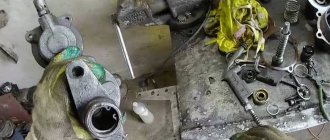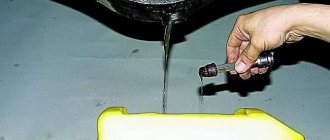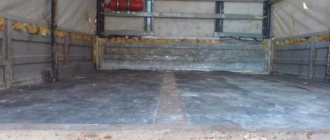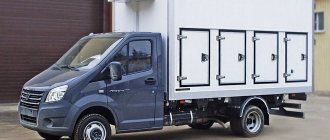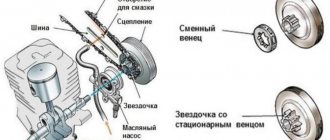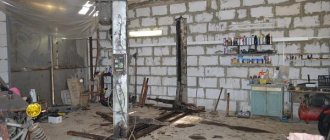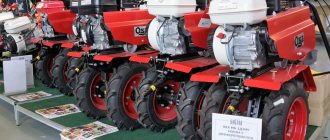The Thermoking company of the same name, which produces thermoking refrigerators, was founded back in 1938. The brand is a leader in the production of refrigeration and heating equipment for vehicles. Devices produced by Termoking factories are installed on railway cars, buses, trucks and semi-trailers.
Instructions for control panels
Since thermoking refrigerators operate using a remote control (abbreviated as RC), detailed instructions are included with the device. It consists of several chapters:
- Main rules for safe use. The section is divided into additional parts devoted to individual components (refrigerant, oil, caution when working with electronic parts, and so on).
- Description of the purpose of each controller button.
- Explanation of operating principles and operation of the remote control software.
- Rules for turning the refrigerator on and off, adjusting the temperature regime, starting the engine, managing defrost cycles.
- Overview of the main menu of the remote control (language changes, analysis of emergency codes).
The document contains more than 60 pages, so the information in it is presented in great detail. It is recommended that you read the manual in its entirety. Both the user’s safety and the service life of the purchased unit depend on this.
Electrical supply for refrigerated containers
When transporting a group of modules or when storing them at the terminal in a connected state, an obligatory condition for the normal operation of the equipment, and, consequently, the safety of the cargo, is to ensure an uninterrupted power supply. To do this, you must correctly calculate the required power of the power supply.
Example:
- total serviced - 20 units;
- 75% of the total number of refrigerated containers (15 pieces) operates simultaneously;
- average energy consumption of one unit is 10 kW;
- power supply network characteristics – 380 V, 50 Hz, cos ȹ 0.78;
- peak load factor – 1.2.
Calculations:
- required power = 20*0.75*10*1.2 = 180 kW;
- required current amperage = 180/(380*1.73*0.78)*1000 = 351 A.
Instructions for refrigerated trucks
The detailed operating instructions include several basic points that every user needs to study:
- Information about the purchased equipment model. This section contains the technical characteristics of the device. You can also schematically familiarize yourself with the basic principles of the model architecture.
- Safety regulations. The attached operating manual for refrigeration systems allows you to familiarize yourself with the rules for starting and using the equipment.
- Analysis of the compressor component. The chapter is devoted to the individual features of the assembly of the unit, as well as the nuances of the operation of the compressor (air flow rate, etc.).
- Controller. Since a remote control is included with the main device, the instructions describe the purposes of all its keys.
- Refrigerator maintenance. The detailed procedure described in the document allows you to perform high-quality diagnostics of the device, as well as the necessary frequency.
- Warning signs are located towards the end.
- The warranty service certificate is also included in the instructions section.
Activities for servicing refrigerated containers
After each unloading, the necessary regular maintenance measures are carried out at port terminals and railway stations: washing and disinfection of the cargo compartment. The internal surfaces of the housing are washed using environmentally and hygienically safe compounds that remove grease and biological contaminants.
Maintenance of refrigerated containers must be carried out in specialized service centers by qualified craftsmen who have modern diagnostic equipment at their disposal. Maintenance steps:
- The DataCORDER device displays information for the last 90 days of operation of the installation, which allows you to identify deviations from the normal operating mode, and therefore identify the most problematic components of the refrigerated container.
- Checking the integrity of the body, the reliability of fixation of the heat-insulating panels and the internal metal layer.
- Electrical diagnostics.
- Checking the condition of the door seals.
- After determining the operability of the electronic components and the tightness of the housing, diagnostics are carried out for refrigerant leaks at the joints. Check the oil level and inspect mechanical components. If necessary, clean the pipelines.
- If necessary, tighten fasteners, clean and/or replace filters, and replace hoses.
Thermal repair
Refrigerators can be repaired only after the root cause of the breakdown has been identified. Most often in practice the following range of malfunctions is encountered:
- Failure of the trigger mechanism. The device does not start;
- Failure of the relay responsible for controlling the amount of lubricant and compressor;
- The need to reduce the protective relay setting;
- Adjusting the pressure inside the injection system.
For maximum convenience, in case of incorrect operation, the following error codes are displayed on the screen of the refrigerator remote control:
- System indicators are not sent to the remote control, even if the refrigerator is started and continues to operate.
- The temperature sensor that monitors the operation of the evaporation mechanism has failed.
- The sensor responsible for controlling the return air flow is broken.
- The air injection circuit has failed.
- The ambient temperature detection system does not work.
- The coolant control mechanism is broken.
- The diesel engine speed sensor is faulty.
Benefits of regular reefer container maintenance
Full timely maintenance of refrigerated containers ensures:
- diagnosing problems in the system;
- eliminating minor damage that could later cause major malfunctions, which would require expensive repairs to eliminate;
- extending the service life of the refrigerator.
Operating instructions for refrigerated containers Carrier, Thermo King, Star-Cool, Daikin
All manufacturers provide the most detailed instructions for the operation and maintenance of refrigerated containers.
Carrier
Refrigerated container Carrier
Refrigerated container Carrier 69NT40-489
Refrigerated container Carrier 69NT20-284, 69NT40-464
Refrigerated container Carrier 69NT40-541-300 to 399
Carrier 69NT40-511 Operation and Maintenance Manual
Thermo King
Thermo King reefer container (Sabroe TNE 508/558)
Reefer container Thermo King CF-II M19
MAGNUM refrigeration units for freezer containers
Thermo King SGCO 2000
Star-Cool
Reefer container Star-Cool SCI-XX-X-CA
Defrost mode in refrigerators
During operation of the refrigeration and heating unit, a layer of frost gradually forms on the evaporator. The reason for freezing of the evaporator is the condensation of water vapor in the air on it. Moisture enters the interior of the van when the doors are opened, and is also released by the cargo being transported, especially if it is cargo without sealed packaging: vegetables, fruits, mushrooms, herbs, etc.
Icing of the HOU evaporator significantly reduces the cooling capacity of the equipment, since ice creates a dense coat that prevents the passage of air through the evaporator, and also has heat-insulating properties, preventing normal heat exchange between the air and the evaporator.
Defrost function is used to combat icing
.
How does defrost work?
In the Thermo King HOU, defrosting is carried out using hot gas (freon). This is the same freon that is used to cool the evaporator, but it enters the evaporator hot for defrosting. This process is ensured by the special design of the chemical dispenser.
Hot freon passes through the evaporator coil, heating it and causing the frost to melt. Melt water is drained from the unit through the drain pipe(s) to the outside.
To prevent warm air from the HOU from being supplied into the space of the van during the defrosting process, a special damper is closed in the evaporator. When operating from a backup electric drive, additional tape heaters installed on the evaporator are also supplied with power.
Defrost is activated in two ways: 1. Automatically 2. Manually
The activation of the defrost mode and the features of its operation are described in detail in the operating instructions for the refrigeration unit, however, there are common features.
Automatic defrost mode
present in most modern refrigerators. For this purpose, special sensors and devices are installed in the cold storage device that control the mode cycle. Defrost is programmed using a timer or depending on the evaporator temperature. In the first case, the timer counts down a specified time (4, 8, 12 or 24 hours) and, upon expiration, commands the remaining elements to start the defrost function. In the second, when the temperature of the evaporator coil drops below 5-7°C, the mode is forced on.
In manual mode
the operator starts the defrost cycle independently from the XOU controller (remote). If the unit is enabled, pressing the DEFROST button will initiate a manual defrost cycle when conditions allow it, i.e. the evaporator temperature is below 5-7°C. The yellow LED will flash when defrost starts and remains lit throughout the cycle. Defrost will complete automatically and the yellow LED will turn off when the evaporator coil temperature exceeds 11°C. Defrosting can also be stopped by turning the unit off and on again. If the mode time limit is exceeded, alarm code No. 14 ̶ “Defrost completed by time” will be displayed.
The unit will not perform a manual defrost cycle under the following conditions:
- if the installation was not turned on using the ON button;
- if the installation operates in continuous mode;
- if the installation operates in CYCLE-SENTRY mode;
- if the installation is disabled in zero CYCLE-SENTRY mode.
In some cases, some functions (for example, the XOU switch when opening the doors) may block the manual defrost mode.
During the defrost cycle, the temperature inside the evaporator rises to +10 °C. This is normal and is caused by the heating of the evaporator coil. Since the evaporator damper is closed during operation, warm air does not penetrate into the cargo compartment.
How to enable defrost?
B, V series units (V-100, V-200, V-300, V-500, V-600, V-800, B-100, etc.) with DSR controller.
Before starting a defrost, ensure that a defrost cycle is no longer running. If the unit is in a defrost cycle, the corresponding symbol lights up on the screen.
1. Press and release the Select button once and the letters dEF will appear (flash) on the screen along with the current OFF defrost condition.
2. Press the Enter button and then the up or down arrow button and the defrost status will change to On.
3. Press the Select button twice to return to the standard screen (three times for dual temperature and reverse cycle units) where the letters dEF and the DEFROST symbol will appear when the defrost cycle starts (cargo compartment temperature must be below 0°C). The letters dEF will remain on the screen for some time after defrost is completed.
Ce series units (C-150e, C-250e, C-350e, C-450e) with CSR controller.
Before starting a defrost, ensure that a defrost cycle is no longer running. If the unit is in a defrost cycle, the corresponding symbol lights up on the screen. To start the defrost cycle, the temperature in the cargo compartment must be below 3 °C.
1. Press the SET button once, then press the UP or DOWN arrow button, then the letters dEF will appear on the screen.
2. Press the SET button for 3 seconds.
3. Press the ON/OFF button to return to the standard screen where the DEFROST symbol will appear once the cycle has started.
Manual defrost is turned off in the same way.
Installations of the SLX, SLXi, SLXe, SLX Spectrum series (SLXe-100, SLXe-200, SLXe-300, etc.) with the SR-3 controller.
The SR-3 controller has a button to start manual defrosting “DEFROST” / “THAWF”.

